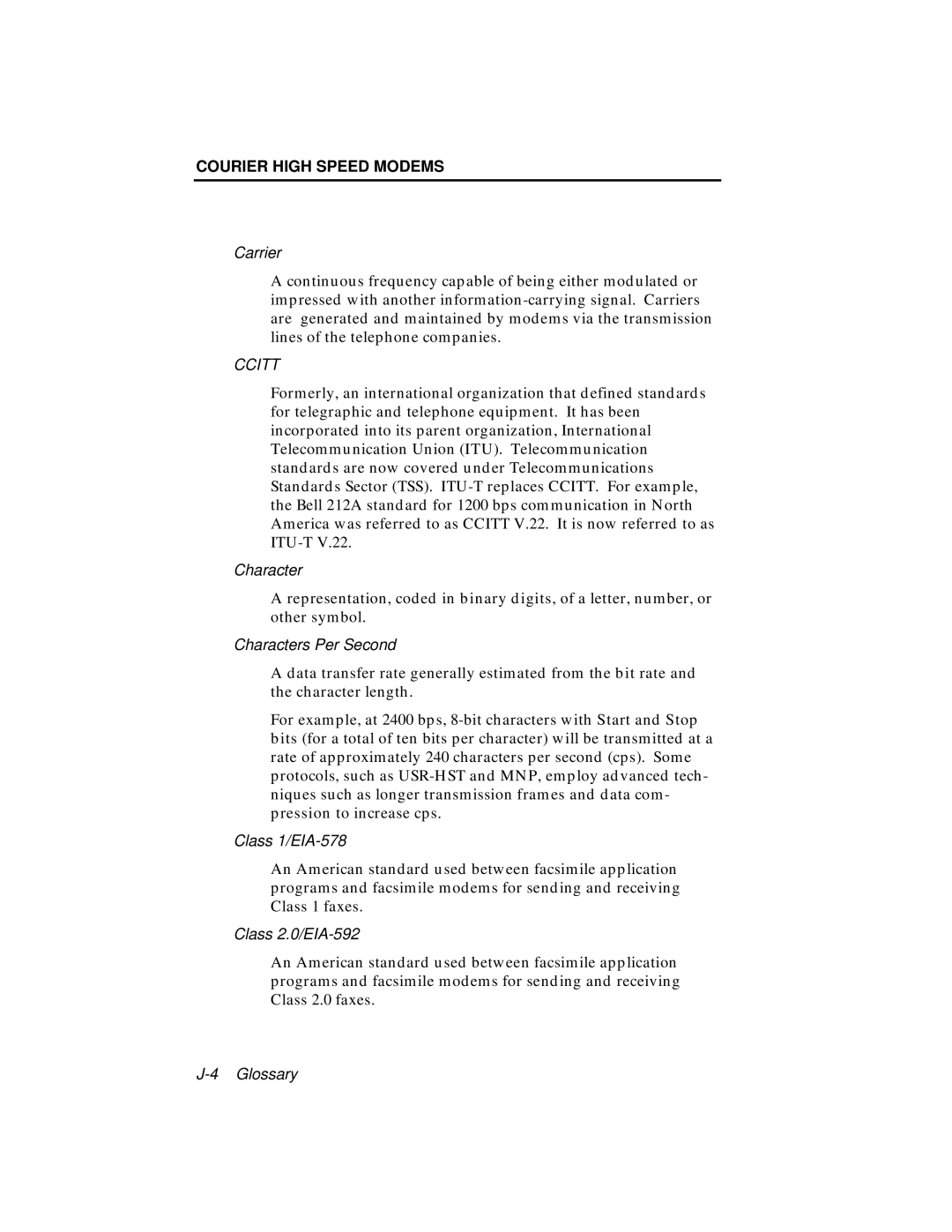COURIER HIGH SPEED MODEMS
Carrier
A continuous frequency capable of being either modulated or impressed with another
CCITT
Formerly, an international organization that defined standards for telegraphic and telephone equipment. It has been incorporated into its parent organization, International Telecommunication Union (ITU). Telecommunication standards are now covered under Telecommunications Standards Sector (TSS).
Character
A representation, coded in binary digits, of a letter, number, or other symbol.
Characters Per Second
A data transfer rate generally estimated from the bit rate and the character length.
For example, at 2400 bps,
Class
An American standard used between facsimile application programs and facsimile modems for sending and receiving Class 1 faxes.
Class
An American standard used between facsimile application programs and facsimile modems for sending and receiving Class 2.0 faxes.
